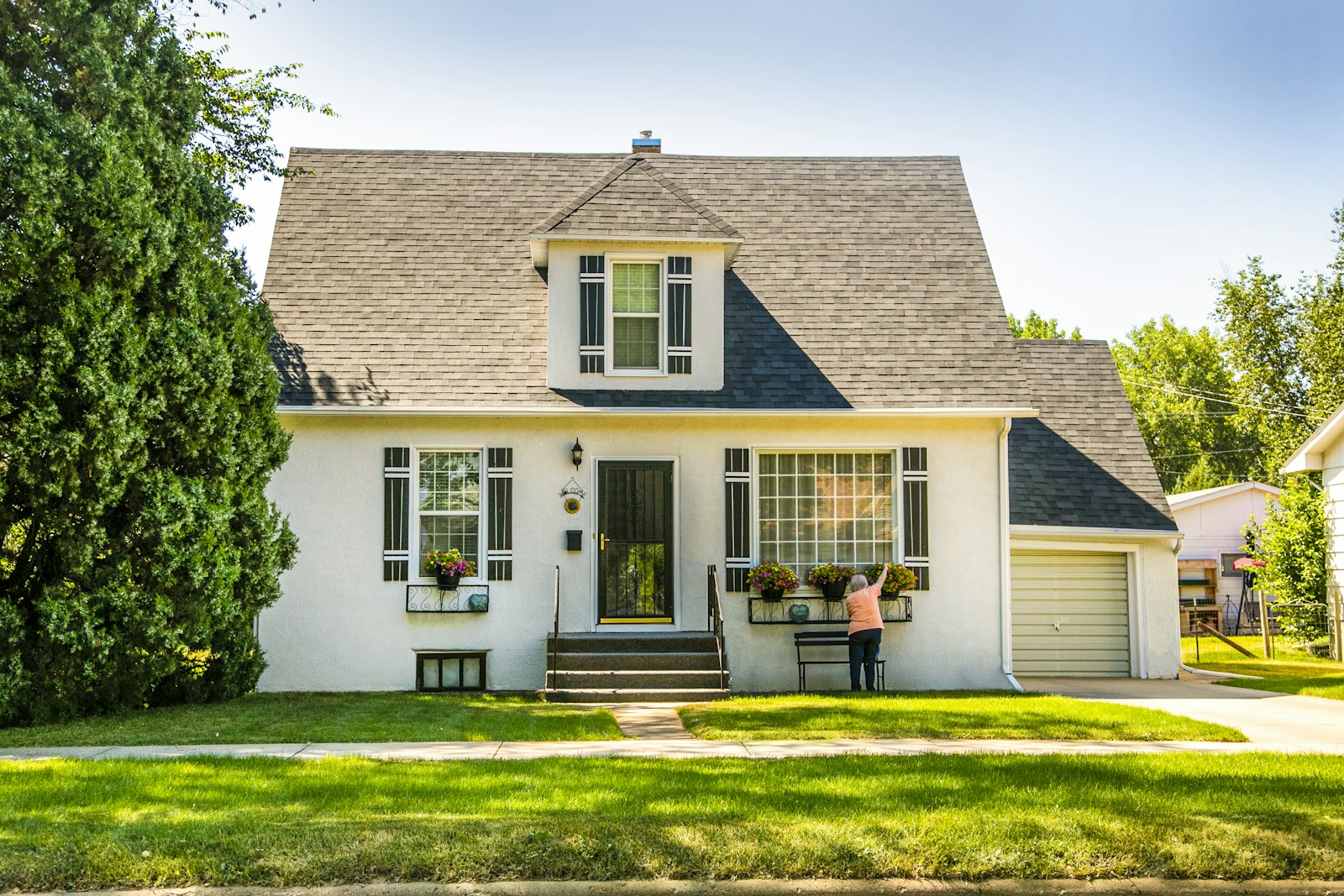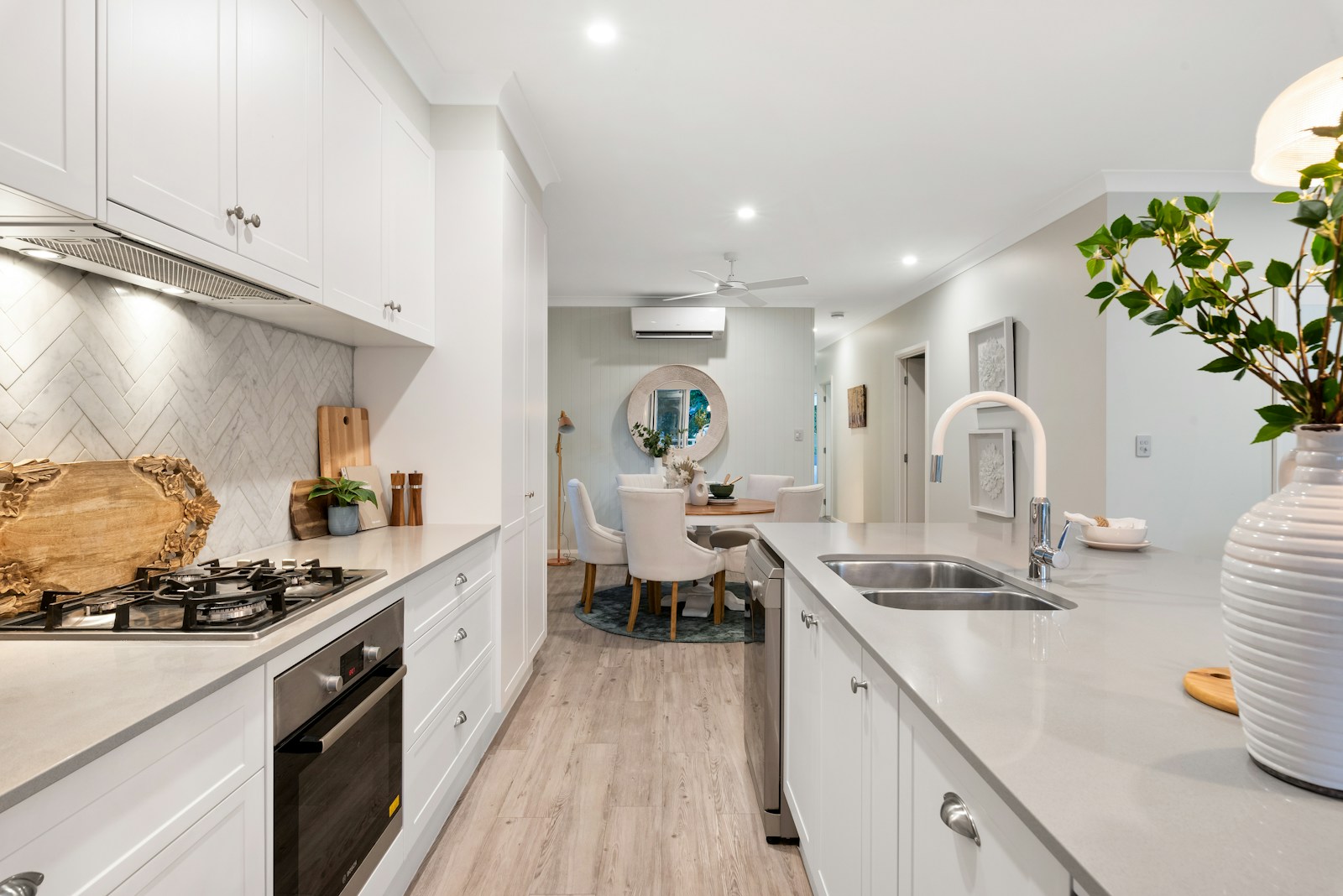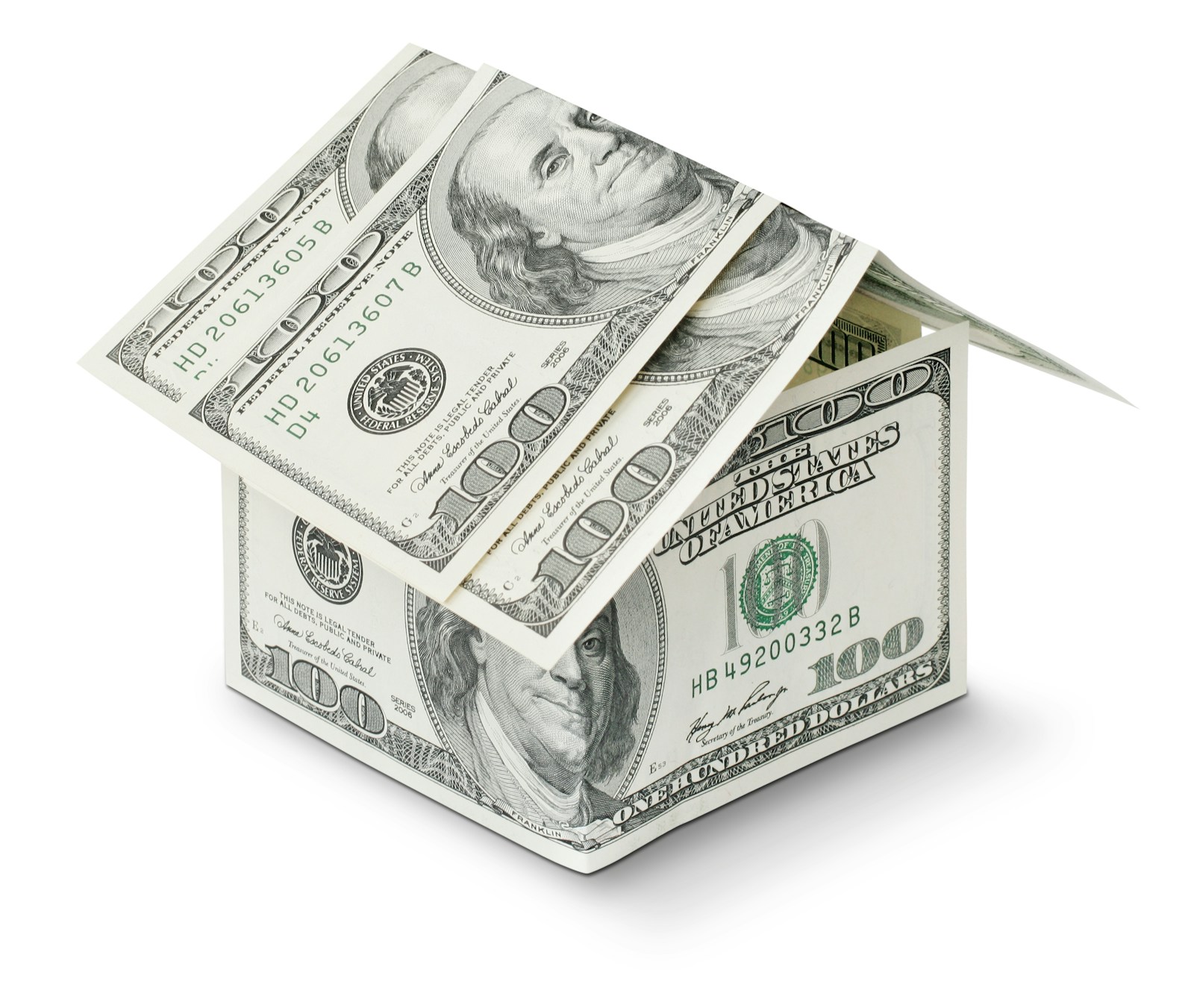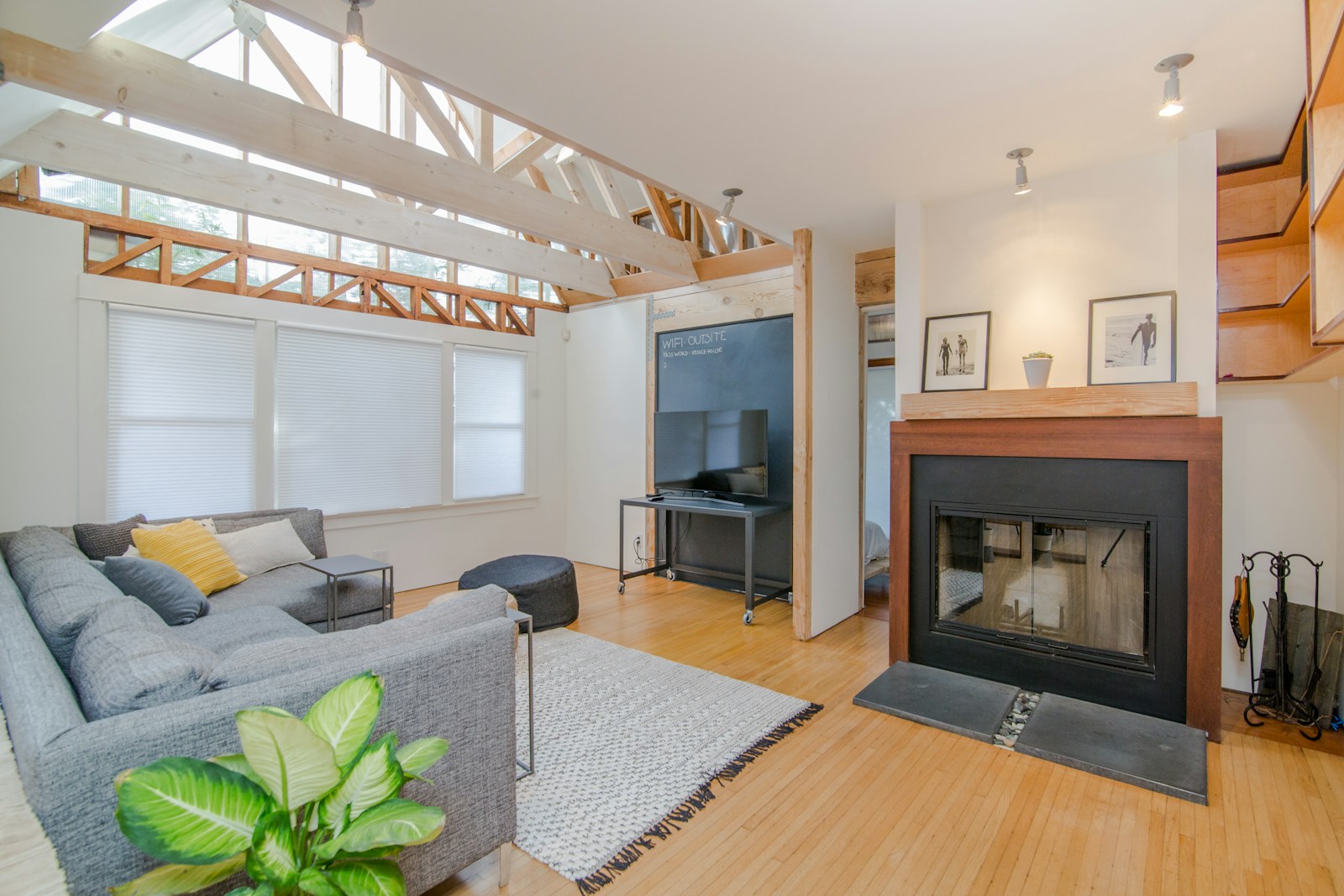There is a lot to think about when you decide to sell your home and this handy litle flowchart will give you an excellent and concise overview of what to expect when.

There is a lot to think about when you decide to sell your home and this handy litle flowchart will give you an excellent and concise overview of what to expect when.

Selling your home is a complex process that can be stressful and time-consuming. An experienced Realtor has the knowledge, skills, and connections to help you through the process every step of the way. Consider the following benefits of working with a Realtor:
Professional Experience:
With knowledge and training in marketing strategy, negotiation tactics, and the workings of the current real estate market, a Realtor will be able to guide you through the steps of the home-selling process and be able to explain exactly what to expect. S/he will make you aware of your rights and responsibilities, work with you to strategize the best moves according to your own goals, discuss financing options, and point you in the direction of other specialized professionals who will aid you in different stages of the process.
Best Price:
Realtors have their fingers on the pulse of the current real estate market, and will know what comparable properties in your area are selling for. They have the resources and knowledge to establish the best asking price and to attract the highest selling price. With access to their company’s professional marketing resources and connections, they will ensure potential buyers are immediately made aware of your home and market the property to sell as quickly as possible and for the most money.
“Showcasing” Experience:
Your Realtor will know the importance of a property’s first impression. S/he will have experienced first-hand, for example, the impact a property’s “drive-up appeal” has on the rest of a potential Buyer’s experience of your home. Your Realtor will be able to offer you tips and information on how to get your home in the best selling shape possible, in order to sell your property quickly and for top dollar.
Access to Qualified Buyers:
Realtors save time and effort by dealing only with qualified buyers. They have access to a pool of pre-screened and pre-qualified buyers who are serious about buying a home in your neighbourhood. Realtors work hard to develop this base of qualified buyers which will become an invaluable resource for you.
Negotiation Skills:
Realtors serve many functions, but perhaps the most important is their role as primary negotiator on your behalf. Your Realtor realizes your goal is to sell your home as quickly as possible, and for the most money possible, and will work closely with you during the negotiation process to facilitate this goal. Realtors bring to the process the knowledge and skills to draw up legally binding contracts, to assist in negotiating offers and counteroffers, and to offer counsel and perspective as you work toward your selling goals.

Setting a realistic price for your home that reflects current market values will help sell your home quickly and for top dollar. When you price your home properly, you increase the chances that the offer you receive will nearly match your asking price, and that there will be competing offers—which may net you even more in the long run.
Your property has the best chance of selling within its first seven weeks on the market. And, studies indicate that the longer a property stays on the market, the less it will ultimately sell for. A property priced 10 % more than its market value is significantly less likely to sell within this window than a property priced close to its actual market value. About three-quarters of homes on the market today are 5-10 % overpriced.
Sellers will usually over-price their homes by this margin if, either, they firmly believe the home is worth more than what the market indicates, or if they want to leave room for negotiation. Either way, if you choose to over-price your home by this amount, you run the risk of increasing the amount of time your home spends on the market, and decreasing the amount of money you’ll ultimately receive.
At the other end of the selling spectrum are houses that are priced below a fair market value. Under-pricing often occurs when the owner is interested in a quick sell. You can bargain on these homes attracting multiple offers and ultimately selling quickly at—or above—the asking price.
The knowledge and skills of an experienced Realtor will be invaluable when determining an appropriate asking price. It is the job of your Realtor to know the current market and market trends inside and out, to be closely connected to the real estate market at large, and to be aware of other properties currently for sale in your particular area. Based on this range of connections and knowledge, your Realtor should counsel you on how to price your home properly in order to attract the highest price possible, in the shortest period of time.
Before approaching this process, you should first do some homework yourself. You’ll need to know the workings of the current market before you even begin to think about setting an asking price. The market will always influence a property’s value, regardless of the state of a home, or its desirability. Here are the types of market conditions and how they may affect you:
1. Seller’s Market:
A Seller’s market is considered a “hot” market. This type of market is created when demand is greater than supply—that is, when the number of Buyers exceeds the number of homes on the market. As a result, these homes usually sell very quickly, and there are often multiple offers. Many homes will sell above the asking price.
2. Buyer’s Market:
A Buyer’s market is a slower market. This type of market occurs when supply is greater than demand, the number of homes exceeding the number of Buyers. Properties are more likely to stay on the market for a longer period of time. Fewer offers will come in, and with less frequency. Prices may even decline during this period. Buyers will have more selection and flexibility in terms of negotiating toward a lower price. Even if your initial offered price is too low, Sellers will be more likely to come back with a counter-offer.
3. Balanced Market:
In a balanced market, supply equals demand, the number of homes on the market roughly equal to the number of Buyers. When a market is balanced there aren’t any concrete rules guiding whether a Buyer should make an offer at the higher end of his/her range, or the lower end. Prices will be stable, and homes will sell within a reasonable period of time. Buyers will have a decent number of homes to choose from, so Sellers may encounter some competition for offers on their home, or none at all.
Remember, a Realtor is trained to provide clients with this information about the market, helping you make the most informed decision possible. The right Realtor will guide you through the ups and downs of the market and keep you up-to-date with the types of changes you might expect.
Evaluate your house in the other main areas that affect market value:
1. Location:
The proximity of your home to amenities, such as schools, parks, public transportation, and stores will affect its status on the market. Also, the quality of neighbourhood planning, and future plans for development and zoning will influence a home’s current market value, as well as the ways in which this value might change.
2. Property:
The age, size, layout, style, and quality of construction of your house will all affect the property’s market value, as well as the size, shape, seclusion and landscaping of the yard.
3. Condition of the Home:
This includes the general condition of your home’s main systems, such as the furnace, central air, electrical system, etc., as well as the appearance and condition of the fixtures, the floor plan of the house, and its first appearances.
4. Comparable Properties:
Ask your Realtor to prepare you a general market analysis of your neighbourhood, so you can determine a range of value for your property. A market analysis will provide you with a market overview and give you a glimpse at what other similar properties have been selling for in the area.
5. Market Conditions/ Economy:
The market value of your home is additionally affected by the number of homes currently on the market, the number of people looking to buy property, current mortgage rates, and the condition of the national and local economy.

If you are considering looking for a new house, and are a current home-owner, then chances are you’re wondering what your strategy should be: do you wait to find the perfect new home before you put your current home on the market, or do you sell first and then look around? You have a few options. Use the following as a guide to explore what might be the best move for you.
Sell First:
There are several benefits to selling your current house before searching for your next home. First of all, once you have sold your house, you will know precisely how much money you have to work with. With a concrete price range, you’ll be able to narrow the pool of houses before you begin looking, and negotiate accordingly. This will allow you to immediately make firm offers on houses that you are serious about purchasing. You can be first in line with an unconditional offer you know you can afford, and this will grant even further negotiating leverage as Sellers tend to take unconditional offers more seriously. When they counter or turn down an offer that’s conditional on the sale of a home, they usually think the Buyer will come back with a better and more firm offer once they have sold their current home. However, if you make an unconditional offer, the Seller will usually give you more consideration, as they realize you’re probably looking at other properties and will move on if your offer is rejected. Likewise, if you have already sold you house, you probably do have a wider opportunity to look around, negotiate, and find the best deal and fit for you and your family.
The flip side of this scenario, however, is that if you don’t find the right property before the closing date of the house you’ve already sold, you may have to look for temporary housing until you do find what you’re looking for.
So, before you opt to sell first, you should determine whether you have alternate, temporary options, in case you have to move from your house before you’ve found a new one. How would you and your family deal with living in a transition home for an undetermined period of time?
Buy First:
Buying a new house without having sold your current home may occur if you are interested in a specific property and will only sell your current home if this property comes on the market. It may be a matter of timing—grabbing hold of the home before it’s too late. The same might be said of a property you haven’t had you eye on previously, but that catches your attention due to its uniqueness or unbelievable price. If buying first means you don’t miss out on the real estate opportunity of a lifetime, it may be the best move.
However, be careful. If you buy another property and aren’t able to sell your current home quickly enough, you could end up having to finance both homes and shoulder the extra debt until you sell. You can get a financial appraisal or market evaluation of a home prior to selling, but this doesn’t guarantee the price you’ll ultimately receive for the home after the negotiation process has run its course. Since your selling price will be an unknown, jumping into a purchase could be a gamble, particularly if your budget is tight.
Make sure you’re familiar with all aspects of the financial reality this scenario would create before you purchase another home. You may be faced with owning two homes at once. What type of financial stress would this bring to your life and how would you deal with it? Consider the fact that if your current house doesn’t sell quickly enough, you may be forced to sell it off at a reduced price in order align the closing dates of your two properties. What effect would this have on your financial situation?
Conditional Offer:
An additional option involves making your offer to purchase conditional upon the sale of your current property within a specified period. Conditional offers usually include a clause that allows for the Sellers to keep their property on the market and remain open to other offers while you try to sell your home. If the Sellers receive another attractive offer before you’ve sold your home, they may accept and ask you to either remove your condition and firm up your offer, or to back down from the offer. A conditional offer forms a kind of middle ground, an area of compromise, for those who are afraid to sell or buy first—but doesn’t hold the advantages of the other two options.
One of the drawbacks of the conditional offer is that Sellers tend to take them less seriously. They definitely give stronger consideration to firm offers. This leaves you with less negotiating power. In fact, some Sellers will simply turn down or counter a conditional offer. Other Sellers will believe the Buyer will come back with a more serious offer when their home has sold. So, you may end up having to increase your offer in order to have your conditional offer accepted and keep your foot in the door of your desired house.
Even if your conditional offer is accepted, there is no guarantee another Buyer won’t step in and overthrow your offer before you have sold your current home, which would put you back at the starting line. Also, consider the fact that you cannot withdraw your conditional offer until the end of the period specified in the contract—which means that if a better deal comes along, you will have to wait to jump at it.

When preparing your property to show, work your way from the outside in. It is essential that your home possess a certain “drive-up appeal.” Remember, a potential buyer’s first impression of your house is formed while s/he is still sitting in the realtor’s car. So, first you need to view your house from this perspective. Go stand on the opposite curb and observe your property. Compare it to surrounding properties. Concentrate on the following three areas:
Landscaping:
How does your landscaping measure up compared to the rest of the neighbourhood? If you guess it would rate below-average, make a few adjustments. You might want to consider buying some bushes and planting them around the property. Do not buy trees, however—mature trees are expensive, so you will not see a return on your investment. And immature trees don’t tend to significantly improve the immediate appearance of your home.
If the problem with your yard isn’t a case of too little greenery, but rather too much, get out the pruning shears. The purpose of landscaping is to complement the home, not hide it. Overgrown shrubs should be sheared to a height near the bottom of the windows. Remove any ivy clinging to the side of the house. Tree limbs should be high enough that you’re able to walk beneath. Trim any branches that bar the way.
Your lawn should be freshly cut and watered, and an even colour. If there are brown spots, make sure you begin to remedy this well in advance of putting the house on the market. You may want to re-sod areas, and you need to make sure these spots are given enough time to grow, so they will match the existing lawn. Also, if you decide to use fertilizer, you’ll want to allow enough time for it to take effect. Rake up any leaves or grass cuttings.
Planting a few flowers is an easy way to add colour and vibrancy to your yard, enhancing the first impression of your home. Invest in a full flat of mature, colourful flowers, such as petunias or periwinkles, which last the length of the growing season. Do not buy bulbs or seeds—they won’t necessarily grow enough by the time you begin showing to achieve the desired effect. If you don’t have an area in which to plant flowers, consider purchasing a few flower pots for your porch and planting flowers or blooming plants.
If you have a pool, keep it sparkling and leaf-free.
House Exterior:
When you view your house from across the street, does it appear weathered or faded? If so, it’s probably time to treat it to a fresh coat of paint. This is usually a sound investment; new paint can do wonders to increase a home’s perceived value.
Stay away from unusual or loud colours. The new colour should fit in with surrounding houses, and complement the style and structure of your house.
Examine the roof closely. Old or leaking roofs should be replaced. If there are leaks, you’ll have to disclose this detail to the homebuyer anyway, and they will want it replaced. If there isn’t any apparent damage, however, wait for word from the home inspector before making repairs.
The Front Door and Porch:
The front door and surrounding area should look particularly fresh and welcoming, as this will be the buyer’s first up-close impression as they enter the house. If you paint nothing else, at least give the door a new coat. Replace the doorbell if it is broken and polish the door fixture until it gleams. Wash the mail box. Keep the porch swept and buy a new plush door mat. All of these little things will contribute to the overall effect of a well cared-for and welcoming home.
Ensure the lock works smoothly and the key fits properly. When a homebuyer visits your house, the Realtor will open the front door with a key. You don’t want the buyers’ first experience to be of waiting on the doorstep while the Realtor fumbles with the lock.

Finding a real estate agent who is right for you requires doing a little homework, and asking the right questions. Choosing an agent is a decision that could ultimately cost or save you thousands of dollars. Keep in mind the individual you choose will be handling almost every maneuver in the biggest financial investment of your life. Experience, interests, and expertise vary from agent to agent, so you should be asking very specific questions in order to align your own needs with the abilities of an appropriate representative. Use the following list of questions as a guide to finding the agent that is right for you:
1. How long have you been involved in residential real estate in this area?
If the agent hasn’t been connected to the residential real estate market for several years, s/he will be out of touch with the cyclical nature of the current market. Your agent must be familiar with trends of the local market and have an eye for the ways in which it will change. This knowledge could mean the difference of thousands of dollars in the long-run.
2. What is your marketing strategy for my home?
A realtor should be able to lay out for you, in detail, a marketing plan to sell your home. Examine this plan carefully. How much money does the realtor allot to advertising? What type of media does s/he use? S/he should be able to demonstrate the effectiveness of one form of media over another, explaining why his/her particular marketing strategy will sell your home faster and for top dollar. The realtor should employ current, innovative marketing techniques that indicate creativity and a willingness to market outside of the box. Stay away from realtors who rely on traditional, dated forms of advertising. They simply won’t work in the current real estate market.
3. How do you support a buyer throughout the process?
A realtor should be able to indicate how s/he will support you through each step of the home-buying or selling process, offering you a unique system to suit your needs and goals. Also, ask if a specialist will be available at each level of the sale. Your realtor should always be on hand to answer questions, but the specific resources of an expert can be invaluable during different stages of the process.
4. What other properties has your company sold in my area?
The realtor should be able to provide you with a complete, detailed listing of their own sales in your area, as well as other comparable sales. You should get a clear idea of what you might be able to expect both from the realtor and from the current market.
5. What is your experience with financing options? How would you suggest I approach my own financing plan?
Each buyer requires a different financing strategy. A realtor should be able to suggest a plan catered specifically to your financial background and needs. Don’t just depend on your lender for information and guidance on financing a new home. Let your agent lead the way.
6. On average, how close is the selling price of your listings to their asking price, and how long do they take to sell?
You can contact the Real Estate Board to obtain information on the selling record of an agent. The Board also has statistics on a broader scale, so you can see whether an agent’s selling performance is higher or lower than the board average, and whether s/he tends to sell faster or slower than the board average. Placing the realtor’s performance on a scale will help you get an idea of how much you might expect your home to sell for, and how long it might take to sell.
7. What is your philosophy/method of negotiation and how will you apply it when selling my home?
Your realtor should be able to articulate effective and informed negotiation tactics that demonstrate a commitment to securing the best price for you.
8. Do you have a reference list of clients I could contact?
Do some homework! Choose a few names on the list and call them. The stories of others who have gone through the home-selling process can be a valuable source of information

Each homebuyer has different ideas of what will constitute the ideal home for them, these notions often based on particular aesthetic preferences. But one thing that unites all potential homebuyers is the desire to find a home that is fundamentally sound—in areas beyond the immediate sweep of the eye—and that will provide a safe, comfortable, and efficient foundation for their life behind a new door.
This is where the services of a home inspector come in. During a home inspection, at least 30 areas of the home are placed under the home inspector’s “microscope.” We’ve compiled the ten most common weaknesses uncovered in a typical home inspection. If not addressed, these problems could cost you thousands of dollars in the long-run. So, knowing what to look for, and performing your own thorough pre-inspection, will help you to identify areas for repair or improvement before they grow into costly problems.
1. Damp Basement:
If a mildew odour is present, the inspector will be able to detect it, as this smell is impossible to mask or eliminate. Mildew odour is often the first indication of dampness in the basement. The inspector will also examine the walls, checking for any signs of whitish mineral deposit just above the floor, and will note whether you feel confident enough to store items on the floor. Repairs can run anywhere from $200 to $15, 000, this cost ultimately influencing the calculation of your home’s value, so consider enlisting the help of an expert to ensure you have a firm grasp on the bottom line before moving forward with the sale of your home.
2. Poorly Installed/ Defective Plumbing:
In older homes, plumbing problems and defects are very common. The inspector will determine whether your home’s plumbing is subject to leaking or clogging. Signs of leakage can be visibly detected. The inspector will test water pressure by turning on all the faucets in the highest bathroom and then flushing the toilet. If the sound of water is audible, this indicates that the home’s pipes may be too narrow. The inspector will also check for signs of discolouration in the water when a faucet is first turned on. The appearance of dirty water is usually an indication that the pipes are rusted—a water quality problem that should be dealt with immediately.
3. Older/ Poorly-Functioning Heating and Cooling Systems:
Heating/ cooling systems that are older or haven’t been properly maintained can pose serious safety and health problems. An inspector will determine the age of your furnace and, if it is over the average life span of a furnace (15-20 years), will likely suggest you replace it, even if it is still in good condition. If your heating system is a forced air gas system, the heat exchanger will be examined very closely, as any cracks can result in the leak of poisonous carbon monoxide gas. These heat exchangers are irreparable; if damaged, they must be replaced. While replacing these components may seem expensive, a new system will yield heightened efficiency, reducing monthly heating/ cooling costs substantially, and benefiting your long-term investment.
4. Older/ Unsafe Electrical System:
In older homes, it is common to find undersized services, aluminum wiring, knob-and-tub wiring, or insufficient/ badly-renovated distribution systems. When an electrical circuit is over-fused, more amperage is drawn on the circuit than what the circuit was intended to bear, creating a fire hazard. You’ll typically find a 15 amp circuit in a home, with increased service for larger appliances such as dryers or stoves. If replacing your fuse panel with a circuit panel, expect a cost of several hundred dollars.
5. Older/ Leaking Roof:
An asphalt roof will last an average of 15 to 20 years. Leaks through the roof could be a sign of physical deterioration of the asphalt shingles caused by aging, or could indicate mechanical damage caused by any number of factors, such as a heavy storm. If you decide your roof requires new shingles, you’ll first need to know how many layers are beneath, in order to determine whether the roof must be completely stripped before installing the new shingles.
6. Minor Structural Problems:
Common in older homes, these problems range from cracked plaster to small shifts in the foundation. While this variety of problem isn’t large enough to cause any real catastrophe, they should be taken care of before they grow.
7. Poor Ventilation:
Unvented bathrooms and cooking areas can become breeding areas for mold and fungus, which, in turn, lead to air quality issues throughout the house, triggering allergic reactions. Mold may additionally cause damage to plaster and window frames. These problems should be identified and taken care of before any permanent damage is caused.
8. Air Leakage:
A cold, drafty home can be the result of any number of problems, such as illfitting doors, aged caulking, low-quality weather strips, or poor attic seals. This nature of repair can usually be taken care of easily and inexpensively.
9. Security Features:
An inspector will look at the standard security features that protect your home, such as the types of lock on the doors/ windows/ patio doors, and the smoke or carbon monoxide detectors and where they’re located throughout the home. Check with an expert if your home is lacking in any of these areas, in order to determine what costs to expect.
10. Drainage/ Grading Problems:
This may be the most common problem found by home inspectors, and is a widespread catalyst of damp and mildewed basements. Solutions to this problem may range from the installation of new gutters and downspouts, to re-grading the lawn and surrounding property in order to direct water away from the house.

Your home is likely your largest asset, so selling it may be the biggest financial move you’ve ever made, one that requires significant thought and strategy. However, once you’ve entered the market, the process may move very quickly: your property has the best chance to sell within its first seven weeks on the market. Studies indicate that the longer a property stays on the market, the less it will ultimately sell for. So, you need to ensure you’re ahead of the game. Get your property into top selling shape before it hits the market in order to increase its chances of selling within the desired window of time and drawing top dollar.
Use the following tips to seize control of the home-selling process before you begin:
1. Establish the Reasons you Want to Sell your Home:
These reasons will direct the path you take in the home-selling process. If, for example, you have already purchased a new home and your goal is to make a quick sale on your current home, this reason will chart your approach. If, on the other hand, you aim to net the highest price possible for your home, you would need to prepare yourself for a potentially slower process. Be clear about these reasons, as they will directly influence the amount of time and effort you put into preparing your home for sale, and the amount you set for your asking price.
2. Pricing:
It is essential you list your property at a competitive market value right from the start. The competitive nature of the market means that over-pricing by a few thousand dollars could make the difference between your home selling quickly or not selling at all. Overpricing your home could potentially yield the following results: minimized offers, fewer showings, fewer agent responses, limited financing, limited buyers qualified for your type of home, or a smaller net price. You can avoid these outcomes by setting the price of your home at its market value when you first list.
If you are unsatisfied with the current market value of your home and unwilling to list it as such, consider putting off the sale of your home at this time.
3. Do your Homework:
Perhaps the most “hands-on” approach to educating yourself about the nature of the current market—what works and what doesn’t—is to explore other homes on the market. Take advantage of Open Houses in your area, particularly in those homes similar to your own. Take some notes. Observe floor plans, lot size, appearance, location, and other features of the property. Then compare asking prices. Go through this process before setting your own asking price. Remember: you want to get a selling price as close to your asking price as possible. And if you want to attract this price quickly, you won’t accomplish this by setting your price higher than your neighbour’s.
4. Decide Whether to Invest in an Appraisal:
Getting an appraisal can be a positive or negative move, depending on the outcome. It’s up to you to determine how it might fit into your personal plan. Having an appraisal done can be a good marketing strategy, indicating to potential buyers that your home can be financed, which will increase the chances that your home will sell quickly and for more money. On the other hand, however, there’s no guarantee you’ll like the final picture offered by the appraisal. Also, it’s one more cost you’ll have to add to your budget, and an appraisal only lasts for a limited period of time.
5. Choosing a Realtor:
Your choice of Realtor will greatly influence your home-selling experience. For better or for worse, this person will be with you every step of the way during one of the largest financial ventures of your life—and will make a difference in the speed with which your house is sold, and how much it sells for. Don’t take this relationship lightly. You should consider a few Realtors before you narrow down your choice. Of course, one of the initial factors to consider will be whether the Realtor’s personality and enthusiasm is a fit for you and your family. Also, each candidate should be able to provide you with information on the following areas: the length of time s/he has been involved in residential real estate in your area, the marketing strategy s/he would use to sell your home, details on other properties in your area their company has sold (how much the property sold for and how long it spent on the market), and his/her philosophy or method of negotiation. You might want to request a reference list of former clients as well. Choose a few names on the list and call them.
6. Cleanliness:
Make no mistake, prospective Buyers will be turned off by even a minimal lack of cleanliness, or an odour. Sellers may lose thousands of dollars if they fail to thoroughly clean the house before they begin to show it. Begin by clearing the house of excess junk, clutter, and furniture. Create more space. Make every room sparkle. Eliminate odours. You may be the last to notice a peculiar odour in your house, but it may be the first thing a potential Buyer notices. So, air out your house prior to showing. Keep pets in the yard as much as possible, and send any household smokers outside.
7. Access to your Home:
Agents will be more reluctant to show your home if it isn’t readily accessible. They don’t want to waste their time running around, picking up and dropping off keys. Rather, a key should be immediately available for agents at all times.
Also, go through the following last-minute list to prepare for showing your home: keep all lights on, doors unlocked, and drapes and shutters open. If you can, leave the house while it is being shown. Head to the local coffee shop, or take the kids to the park. Prospective Buyers will feel more intrusive if the owner of the house is present while they are viewing. If you can’t leave the house, be as unassuming as possible.
8. Updated Interior:
A fresh coat of paint may be one of your best investments when preparing your home for the market. New paint can take years off the appearance of your home, dramatically increasing its perceived value. Likewise, if your carpeting appears worn, old, or is an outdated pattern, consider replacing it. The carpet or paint in one room could be the difference between a successful sale and your home being overlooked.
9. Drive-Up Appeal:
If the buyer doesn’t like the outside of your house, s/he may choose to skip it entirely. It is essential that your home possess a certain “drive-up appeal.” Remember, a potential buyer’s first impression of your house is formed while s/he is still sitting in the realtor’s car. Ensure the trees are trimmed, the walkway swept, the lawn cut. Paint the door, and put out a new, plush door mat. All of these little things will contribute to the overall effect of a well cared-for and welcoming home.

There is no set equation to determine how you’ll reach an offer price. Rather, the process involves a range of research and comparison that will vary with each situation. You’ll need to look at sales of comparable properties, and factor in additional data such as the condition of the property, the current market, and seller circumstances. With this information in hand, you will be able to determine a fair price range and, from there, establish the price you’re willing to offer.
Concentrate on the following areas to help you determine an offer price:
Comparable Sales
• Compare prices of homes that are similar to the property you’re considering in the following areas: number of bedrooms and bathrooms, square footage, lot size, type of construction, and garage space.
• The most comprehensive and in-depth information can be accessed through the Multiple Listing Service (MLS). Your Realtor, who will be working closely with you to set your offer price, can help you navigate this service.
Property Condition
• Observe how the property compares to the rest of the neighbourhood. Is it average, above average, or below average?
• Look at structural condition: walls, ceilings, windows, floors, doors.
• Pay close attention to: bathrooms, bedrooms, condition of plumbing and electricity.
• Also check the fixtures: light switches, doorknobs, drawer handles, etc.
• What is the condition of the front and back yards?
Home Improvements
• Cosmetic changes can be largely ignored, but any major improvements should be taken into account.
• Take special note of: room additions (especially bedrooms and bathrooms).
• Items such as swimming pools may be taken into account, but usually won’t affect your offer. Your Realtor can offer your guidance in these matters.
Market Conditions
• Seller’s Market:
A seller’s market is considered a “hot” market. This type of market is created when demand is greater than supply—that is, when the number of Buyers exceeds the number of homes on the market. As a result, these homes usually sell very quickly, and there are often multiple offers. Many homes will sell above the asking price.
• Buyer’s Market:
A Buyer’s market is a slower market. This type of market occurs when supply is greater than demand, the number of homes exceeding the number of Buyers. Properties are more likely to stay on the market for a longer period of time. Fewer offers will come in, and with less frequency. Prices may even decline during this period. Buyers will have more selection and flexibility in terms of negotiating toward a lower price. Even if your initial offered price is too low, Sellers will be more likely to come back with a counter-offer.
• Balanced Market:
In a balanced market, supply equals demand, the number of homes on the market roughly equal to the number of Buyers. When a market is balanced there aren’t any concrete rules guiding whether a Buyer should make an offer at the higher end of his/her range, or the lower end. Prices will be stable, and homes will sell within a reasonable period of time. Buyers will have a decent number of homes to choose from, so Sellers may encounter some competition for offers on their home, or none at all.
Comparable sales information helps you establish a price range for the home you’re interested in. Adding in the additional factors mentioned above will guide your decision of whether you consider a “fair” price to be near the upper or lower limit—or the middle—of that range. Keep in mind, this price should be the one you’d be happy with once all negotiations are said and done. The price you decide to begin with depends on your particular style of negotiation. Most Buyers begin the negotiation process with a number lower than the “fair” price they’ve come up with.

Once you’ve minimized the clutter in your home, clearing out excess items and furniture, you’ll be ready to concentrate on repairs, cleaning, and decoration. Your goal is to get each room looking its sharpest and most fresh—the better your house looks, the greater your chances that it will sell quickly and for top dollar. Concentrate on the following areas to get your home into selling shape.
Walls and Ceiling:
Examine all the ceilings and walls for water stains or dirt. We don’t often look closely at the walls that surround us, so be careful—there could be residual stains from leaks that have long been fixed, or an accumulation of dirt in an area you hadn’t noticed.
Painting the walls may be the best investment you can make when preparing your home to sell. You can do it yourself, and relatively inexpensively. Remember, the colours you choose should appeal to the widest range of buyers, not just to your own personal taste. A shade of off-white is the best bet for most rooms, as it makes the space appear larger and bright.
Carpet and Flooring:
Does your carpet appear old, or worn in areas? Is it an outdated colour or pattern? If the answer to either of these questions is yes, you should consider replacing it. You can find replacement carpeting that is relatively inexpensive. And always opt for neutral colours. Any visibly broken floor tiles should be replaced. But make sure you don’t spend too much on these replacements. The goal isn’t to re-vamp the entire home, but, rather, to avoid causing any negative impressions due to noticeable damage or wear around the house.
Doors and Windows:
Check the entire house for any cracked or chipped window panes. If they are damaged in any way, replace them. Test all windows, as well, to ensure they open and close easily. Try spraying WD40 on any with which you’re having trouble. This should loosen them up.
The same can be done with sticking or creaking doors. A shot of WD40 on the hinges should make the creak disappear. Check to make sure each door knob turns smoothly and polish it to gleaming.
Odour Check:
Begin by airing out the house. Chances are, you’d be the last person to notice any strange or unpleasant smell that may be immediately apparent to visitors.
If you smoke indoors, you’ll want to minimize the smell before you show your home. Take your cigarettes outside for a period of time before you begin showing. Ozone sprays also help eliminate those lingering odours without leaving a masking, perfumed smell.
Be careful if you have a pet. You may have become used to the particular smell of your cat or dog. Make sure litter boxes are kept clean. Keep your dog outdoors as much as possible. You may want to intermittently sprinkle your carpets with carpet freshener as well.
Plumbing and Fixtures:
All sink fixtures should look shiny and fresh. Buy new ones if scrubbing fails to get them into shape. Replacing them can be done fairly easily and inexpensively. Check to make sure all hot and cold faucets are easy to turn and that none of the faucets leaks. If you do find a leaking faucet, change the washer. Again, this is an easy and inexpensive procedure.
Finally, check the water pressure of each faucet, and look for any stains on the porcelain of the sinks or tubs.
Once you’ve covered all these bases, your house will be in prime shape for its time on the market. Congratulations—you’re ready to begin showing!

Don’t get discouraged if your property hasn’t sold during its first appearance on the market. Your home may actually have been one of the most appealing listings of its kind—and the reasons it didn’t sell may have nothing to do with the property itself or the market. Rather, a number of separate factors may have influenced the outcome. Take a step back, break your original selling method into parts, and allow yourself time to evaluate each one. Make a commitment. Establish a new approach. Stick to it. A reassessment of your system, and a shift in perspective, may be just what you need to realize your ultimate goals in the sale of your home.
If your listing has expired, you will usually find weakness in one of the following areas:
1. Appearance and Condition of your Property
When preparing your home to show to buyers, always remember: the decision to buy a home is one coloured primarily by emotion, not logic. Every buyer has different ideas of what “Dream Home” means to them. Of course, your home won’t appeal to every buyer’s palate. But, how prepared are you? Is your home inspiration-worthy? Have you prepared each room with the goal that it leave a lasting impression? Have you cultivated ambiance? For example, when a buyer stands in your kitchen, will she warm to the thought of drinking coffee at the table every morning? Does the décor in the master bedroom inspire feelings of comfort and relaxation? You should make every effort to make you home appear inviting and appealing. This means covering all the bases:
• Take care of any general repairs needed.
• Tidy away the clutter; every room should appear well-ordered and neat
• Maintain a strict level of cleanliness while showing. Everything should be clean, from shelves to carpets to furniture. While you may no longer notice that wine stain on the rug, it could be the first thing a potential buyer sees when she walks into the room.
• Increase the brightness and warmth in your home: open curtains, turn on the lights, put out flowers, play soothing background music.
• Don’t forget the exterior of the house. Concentrate on the “curb appeal” ofyour home. What impression will a buyer get when s/he first pulls into the driveway? Keep the lawn well-groomed and the rest of the property tidy.
• Assess any major decorating or renovation projects that your property could be in need of. If your home could use a new paint-job, for example, consider taking care of this yourself, rather than offering a repair allowance to prospective buyers. Don’t leave such changes to their imagination—if they are looking at run-down walls, chances are they will incorporate this flawed experience of your house into the price they’ll be willing to pay. Ultimately, you’re better off checking these projects off the list before showing your home.
A house that is showcased well and offers a lasting impression will sell for the best price, going a step beyond the competition. Be sure to see if your agent will put together a no-obligation examination of your home to assist you in looking at the factors we’ve mentioned.
2. Pricing
The market value of your home is based on the price a willing prospect will pay, as well as the price a willing seller will accept. Pricing your home too high can be as financially dangerous as pricing it too low. Keep in mind, your listing does not include the price you paid originally for your home. Often, sellers include this original price—or the amount of money they’ve invested in their home so far— into their selling price equation. This mistake may prove to be a costly one. Pricing your home too high can result in prospective buyers rejecting your home for larger homes listed at the same price. Ask yourself: did your price work for you or against you? The “right” price balances upon a combination of: competition within the market, the condition of the market, and the state of your home.
Request an up-to-date market analysis from your agent to help give you an idea of what an appropriate asking price for your home might be. This market analysis should give you an idea of the competition involved in the current market, offering an assessment of homes similar to your own that have recently sold or are currently on the market. It should also show you how long other homes have been listed, in order to give you an idea of the average amount of time you can expect a home to stay on the market. And it should indicate the homes with expired listings, to help you glean some understanding of the reasons why this might occur.
3. Marketing and Communication
Your marketing plan begins with choosing the right realtor for your home-selling needs. The realtor you choose should be committed to selling your property, ensuring your home is marketed and showcased in the most effective way possible. So, when interviewing agents, it’s a good idea to ask them to give you a rundown of the marketing strategy they would use to sell your home. Investigate and compare how much money each realtor spends on advertising a property and the types of media s/he employs. How effective is each brand of advertising?
Your real estate agent should recognize the most effective marketing strategy for the unique offerings of your home. S/he should also articulate to you the most direct marketing route to the largest pool of potential buyers. Be wary of agents who rely on outdated advertising strategies. The most successful agents on the market today are those who employ current, innovative marketing techniques. These are the agents you can rely on to have the skills and tools required to sell your home fast and for top dollar.
4. Operating as a Team
Communication between you and your realtor is essential. Your realtor should listen to your needs and goals, and be able to translate these into an active, effective home-selling strategy. Once this strategy has been put into play, you should receive detailed, up-to-date feedback on the status of the sale. Your realtor should be actively involved in every showing, speaking to agents who have shown your home, and relaying this information to you. You should be able to work together to build an effective strategy and alter the course if need be. Evaluate the relationship you had with your realtor while your home was on the market. Did you feel as though your realtor involved you every step of the way? Were you given the information you needed to stay on top of progress? Did your realtor listen to your wishes and concerns and act upon them?

After putting in a huge amount of time and effort to get your home looking good and ready to sell, your hard work is finally going to pay off: your home is on the market— you’re ready to begin showing. Your house should always be at-the-ready for a tour, as agents may bring clients by with very little notice. If they catch you unprepared and you aren’t able to show the house on the spot, you could be losing out on a sale. Concentrate on the following areas to ensure your home is ready to show:
1. People
Homebuyers may feel like intruders if you are present while they view your house, and this will affect their overall impression. Consider taking the opportunity to visit the local coffee shop, go shopping, or take the kids to the park. If you can’t leave while the house is being shown, try to be as unassuming as possible. Do not move from room to room. Don’t offer information, but make yourself available to answer any questions the agent or buyers might have.
2. Lighting
When you know an agent is bringing someone by, make sure all of the drapes and window shades are open to let in as much daylight as possible, or—if the showing is taking place at night—to create a look of comfort and warmth when viewed from the outside. Open all the doors between rooms to create an open, inviting feel. Turn on all lamps and overhead lights, even during the day. Keeping lights on during the day softens the harsh shadows sunlight can create in a room, and illuminates dim corners. During nighttime showings, make sure all outdoor lights are on, as well as pool lights.
3. Cleanliness
Scan the floor for debris—newspapers and magazines tend to accumulate without our noticing. Make sure all the counters are clutter-free. Empty the kitchen garbage before every showing, particularly if the garbage can doesn’t have a lid. Keep everything freshly dusted and vacuumed. Beds should be made and bathrooms cleaned (toilet lid down). Every room should sparkle.
4. Scents and Sounds
Avoid using scented sprays before showing your home. Some people simply won’t enjoy the smell, and others may be allergic. If you want to make a room smell pleasant, consider a potpourri pot or a naturally-sourced aroma. If you or your family is home while the agent is giving a tour, try to stay as quiet as possible. Turn off the television and the blaring radio. Put on some soothing background music at a low volume.
5. Pets
If you have pets, make sure your listing agent includes this in your listing on the Multiple Listing Service. This way, no one will be surprised by a furry welcome if the agent shows the house while you’re not there. If you know someone is coming to tour the house, ideally you should take the pets with you, or arrange to have a friend or family member take them. If this isn’t possible, keep dogs in the backyard, preferably in a penned area. Try to keep indoor cats in one room while people are touring the house, and put a sign on the door.
Introducing Terry Mitterer, your trusted Realtor, who turns your real estate dreams into reality. With Terry, conquer hurdles, win negotiations, and minimize stress. Your best interests are top priority as Terry expertly guides you to achieve your goals. Choose Terry Mitterer for an extraordinary real estate experience!
![]() The data relating to real estate on this website comes in part from the MLS® Reciprocity program of either the Real Estate Board of Greater Vancouver (REBGV), the Fraser Valley Real Estate Board (FVREB) or the Chilliwack and District Real Estate Board (CADREB). Real estate listings held by participating real estate firms are marked with the MLS® logo and detailed information about the listing includes the name of the listing agent. This representation is based in whole or part on data generated by either the REBGV, the FVREB or the CADREB which assumes no responsibility for its accuracy. The materials contained on this page may not be reproduced without the express written consent of either the REBGV, the FVREB or the CADREB.
The data relating to real estate on this website comes in part from the MLS® Reciprocity program of either the Real Estate Board of Greater Vancouver (REBGV), the Fraser Valley Real Estate Board (FVREB) or the Chilliwack and District Real Estate Board (CADREB). Real estate listings held by participating real estate firms are marked with the MLS® logo and detailed information about the listing includes the name of the listing agent. This representation is based in whole or part on data generated by either the REBGV, the FVREB or the CADREB which assumes no responsibility for its accuracy. The materials contained on this page may not be reproduced without the express written consent of either the REBGV, the FVREB or the CADREB.
©Copyright 2023 Terry Mitterer. All rights reserved. | Privacy Policy | Powered by myRealPage